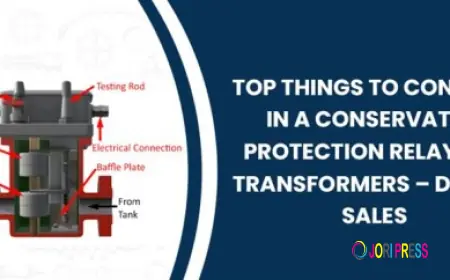How Can You Craft a High-Impact Go-To-Market Strategy for AI Tokens?

As blockchain continues to intertwine with artificial intelligence, AI tokens have become one of the most sought-after assets in Web3. These tokens, often linked to AI agents, decentralized compute, or data ecosystems, carry immense potential—but also face fierce competition. Crafting a high-impact go-to-market (GTM) strategy for AI tokens is no longer optional. It's a make-or-break requirement in a landscape crowded with copycats, hyped vaporware, and attention-fatigued investors. A strong GTM approach helps align vision with execution, validates market demand, and builds community trust early. From tokenomics to community activation and technical documentation to regulatory strategy, every piece must work together to ensure your AI token doesn’t just launch—it scales.
Understanding the Unique Positioning of AI Tokens
AI tokens are different from general-purpose crypto assets. Their core value is often tied to real-world utility—such as facilitating access to machine learning models, incentivizing decentralized compute networks, or powering autonomous AI agents in DeFi and metaverse environments. As a result, the GTM strategy must focus on both blockchain-native and AI-native narratives. This dual appeal means messaging must speak to crypto degens, institutional investors, and AI researchers alike. Properly articulating the problem your AI token solves and how it interfaces with both Web3 infrastructure and AI services is crucial to establishing product-market fit.
Market Research and Competitive Benchmarking
Before launching your AI token, rigorous market research is the foundation. Understanding the competitive landscape includes mapping out existing AI tokens like Fetch.ai, Ocean Protocol, Render, and SingularityNET. What market segments are oversaturated? Which niches—like AI data training markets, decentralized inference, or AI orchestration—are underserved? Additionally, understanding user behavior on Web3 platforms like Kaito, X, and Discord helps shape positioning strategies. You’ll need to dive deep into how similar projects attract users, what language resonates with AI developers versus Web3 natives, and where the sentiment gaps lie. This process will sharpen your differentiation and help anticipate shifts in the hype cycle.
Building a Compelling AI Token Narrative
A high-impact GTM strategy requires a powerful and consistent story. Your AI token’s narrative should center around its mission, the AI use case it empowers, and the value it returns to the ecosystem. Whether it’s enabling autonomous agents to transact in real time or providing a decentralized alternative to OpenAI APIs, the messaging should balance technical accuracy with simplicity. This narrative becomes the backbone for all communications—from pitch decks and whitepapers to social media threads and YouTube explainers. Consistency across every channel enhances brand recall and cements trust with early believers, especially in a volatile market where authenticity matters.
Tokenomics That Incentivize Long-Term Participation
Tokenomics plays a critical role in a GTM strategy. Beyond being a fundraising tool, your AI token must incentivize real usage and long-term ecosystem alignment. That includes structuring supply distribution across developers, stakers, data providers, validators, and AI model contributors. Your emission schedule should avoid early inflation that leads to dumps while ensuring sufficient liquidity for participation. Lockups, vesting periods, and staking rewards should all align with real utility milestones—not just speculation. Importantly, gamified staking or AI-agent-based yield mechanisms can further differentiate your token and provide early engagement loops that feed back into growth.
Creating Technical Assets That Speak to Developers and Validators
One of the most overlooked areas in many GTM strategies is technical documentation. Since most AI token ecosystems rely on participation from developers, validators, and researchers, you need more than just a whitepaper. Detailed SDKs, smart contract documentation, architecture diagrams, and testnet walkthroughs should all be ready pre-TGE. Hosting early workshops or dev bounty challenges can create buzz and hands-on traction before the mainnet goes live. Additionally, publishing your AI model architecture (if applicable) and transparency around on-chain vs. off-chain logic builds credibility. This fosters trust among a technically literate crowd that will form the backbone of your ecosystem.
Selecting the Right Launch Platforms and Strategic Partners
Choosing the right platform to launch your AI token is a strategic decision. Platforms like Kaito have emerged as key players in early-stage discovery, especially for AI-related tokens. These platforms amplify awareness through pre-TGE leaderboards, airdrops, and gamified engagement, giving projects an edge in user acquisition. Additionally, working with launchpads that specialize in AI or data-centric tokens can provide tailored exposure. Beyond platforms, strategic partnerships with data providers, AI researchers, or L2 chains with rollup-as-a-service solutions can provide strong proof-of-concept. These collaborations create network effects, expand reach, and validate your project's legitimacy.
Building a Multi-Tiered Community Engagement Funnel
No GTM strategy for AI tokens can ignore the importance of community. But a successful approach doesn’t just mean starting a Discord and Telegram. You need a structured funnel—from broad awareness campaigns (memes, reels, AMAs) to deeper engagement channels (DAO discussions, GitHub PRs, validator onboarding). AI tokens especially benefit from creating community working groups where AI practitioners can test models, co-create datasets, or give feedback on the token utility. Offering token-gated access to experimental tools or AI models encourages genuine contributions rather than passive airdrop farming. You should also consider multilingual outreach if your token aims to tap into non-Western developer communities.
Leveraging Influencer and Content Marketing for Web3 and AI
Influencer marketing remains one of the most effective GTM levers—if executed with nuance. For AI tokens, this means working with a hybrid of Web3 KOLs and AI thought leaders. While YouTube explainers and Twitter spaces remain critical, Medium deep-dives and LinkedIn thought leadership also carry weight in the AI space. Long-form content explaining your AI stack, token use cases, and economic models can position you as more than just another hype token. Make sure to incorporate video content, interactive explainers, and behind-the-scenes dev stories. This media-rich approach increases visibility and gives potential partners and investors multiple touchpoints to explore.
Running a High-Impact Airdrop and Incentivization Campaign
Airdrops are a proven driver of early traction—but the design matters. High-impact GTM strategies use airdrops not just as giveaways, but as gamified onboarding paths. For example, you can reward users for AI model training contributions, agent deployments, or validator setup. Kaito’s leaderboard and quest systems allow early users to prove their commitment and gain access to the TGE. This cultivates high-intent early adopters rather than mercenary airdrop hunters. Your airdrop should tie directly to long-term engagement, such as DAO voting power, access to exclusive tools, or discounted AI inference costs.
Regulatory Compliance and Global Token Strategy
In today’s regulatory climate, a successful GTM strategy must account for compliance from the beginning. That means structuring your AI token distribution in ways that avoid securities classification, ensuring KYC/AML for token sales, and limiting jurisdictional risks. If your AI token includes compute or data-sharing components, privacy laws like GDPR or CCPA must be factored in. Moreover, if your ecosystem has enterprise ambitions, being able to articulate your compliance stance is essential for partnerships. Legal readiness should be baked into your GTM timeline—this includes getting opinions from crypto-specialized law firms and preparing necessary disclosures before your TGE.
Tracking Metrics and Feedback Loops for Iterative Launch
No GTM strategy is perfect from day one, especially in a fast-moving market. Success depends on real-time feedback loops and KPI tracking. Your GTM strategy should include dashboards that track user growth, developer participation, staking behavior, model usage (if applicable), and community sentiment. By identifying friction points—such as low onboarding completion or high token churn—you can iterate quickly. Holding regular community calls, governance polls, and developer roundtables lets users feel involved and gives you valuable input. Over time, your GTM strategy evolves into an ecosystem growth engine that continues post-launch.
Preparing for the Post-TGE Momentum Phase
Many AI tokens fizzle out after their TGE because they lacked a post-launch GTM plan. Your strategy must include what happens after the token lists. This includes ongoing developer grants, hackathons, data bounties, and new feature rollouts. Major exchange listings may offer initial liquidity but should be paired with constant utility creation and protocol usage. Hosting live AI competitions or releasing new agent modules every quarter keeps the buzz alive. Remember, your GTM doesn't end with the token launch it evolves into a product growth strategy that sustains interest and drives adoption at scale.
Conclusion:
Crafting a high-impact go-to-market strategy for your AI token is about aligning vision with execution across narrative, community, technology, and compliance. In a market teeming with innovation and noise, only projects that take a strategic, integrated approach will achieve breakout success. From the moment you define your token utility to the post-TGE growth campaigns, every decision must be intentional. It’s not just about launching a token it’s about building a lasting AI ecosystem that commands attention, inspires participation, and stands resilient in the evolving Web3 landscape.
What's Your Reaction?
 Like
0
Like
0
 Dislike
0
Dislike
0
 Love
0
Love
0
 Funny
0
Funny
0
 Angry
0
Angry
0
 Sad
0
Sad
0
 Wow
0
Wow
0

















































